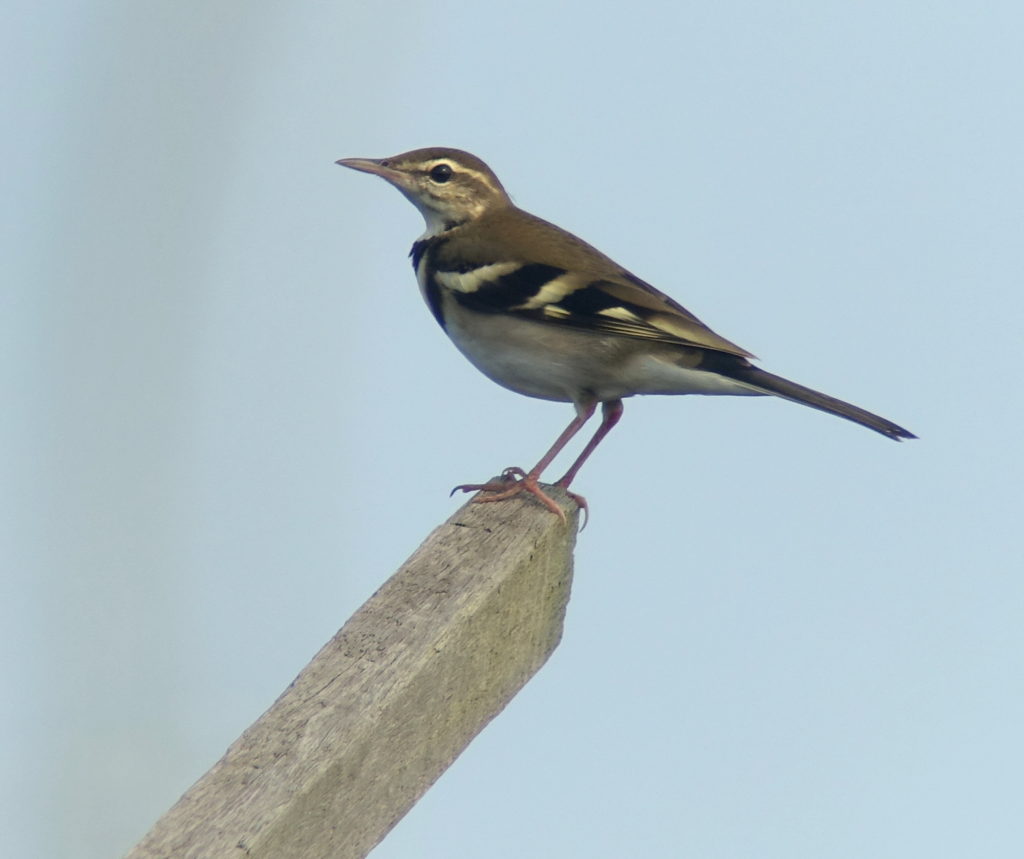Bird News from Nial Moores and Bernhard Seliger
A quick visit to Baekryeong Island in very humid and warm conditions to survey birds and habitats; to identify a few of the major environmental challenges; and to discuss possible conservation solutions for this biodiversity hotspot adjacent to the inner border of Korea.
 View from the east of Baekryeong Island toward Jincheon (on the left) and the DPRK coast of Hwanghaenam behind – only about 15km away or 20-25 minutes flying time for a small landbird. Conservation of migratory birds, biodiversity and local livelihoods in East Asia in general and in the inner border region of Korea in particular requires good science, meaningful collaboration and the building of trust between relevant bodies and stakeholders © Nial Moores
View from the east of Baekryeong Island toward Jincheon (on the left) and the DPRK coast of Hwanghaenam behind – only about 15km away or 20-25 minutes flying time for a small landbird. Conservation of migratory birds, biodiversity and local livelihoods in East Asia in general and in the inner border region of Korea in particular requires good science, meaningful collaboration and the building of trust between relevant bodies and stakeholders © Nial Moores
In total, c. 82 bird species were logged on/ from the island itself, with seven additional species seen only from the ferry including single Short-tailed and Flesh-footed Shearwaters on the 16th and a dozen Red-necked Phalarope on the 19th.
We were able to enjoy several encounters with regular “crowd favourites” like Common Kingfisher and Chinese Grosbeak, both of which are assumed to breed and also migrate through the island…

 Common Kingfishers Alcedo atthis © Bernhard Seliger
Common Kingfishers Alcedo atthis © Bernhard Seliger
 Male Chinese Grosbeak Eophona migratoria © Nial Moores
Male Chinese Grosbeak Eophona migratoria © Nial Moores
While more notable species included:
White-winged Scoter Melanitta deglandi stejnegeri. One female was seen off Hwadong on 17th, and one from the ferry off Socheong on the 19th. Oversummering in Korean waters no longer seems to be exceptional. We saw three during seabird surveys in September 2015 near to the inner border of Korea in Goseong County, Gangwon Province; and large numbers in Rason (NE DPRK) in July 2016.
Swinhoe’s Storm Petrel Oceanodroma monorhis. From the ferry, 15-20 were seen on the 16th and four were seen on the 19th.
Streaked Shearwater Calonectris leucomelas. From the ferry, 400+ were seen on the 16th (most off from Socheong) and 77 on the 19th. In addition, 30+ were seen off from Junghwadong on the 17th and on the 18th five were seen in DPRK waters from the viewing point above Yongi Bay on the 18th.
Black-faced Spoonbill Platalea minor. Two were present on the main reservoir.
Yellow Bittern Ixobrychus sinensis. One was in Yeonhwa Ri on the 19th.
Chinese Egret Egretta eulophotes. One was in Yeonhwa Ri on the 18th.
Watercock Gallicrex cinerea. A very young male was in Yeonhwa Ri on the 17th.
Aleutian Tern Onychoprion aleuticus. A probable adult was seen with Common Terns from the ferry on the 19th.
Common Tern Sterna hirundo. On the 16th, 40-50 were seen from the ferry, including several close to Socheong. On 19th, 38 were counted on the return ferry to Incheon.
Rhinoceros Auklet Cerorhinca monocerata. A smallish (Rhinoceros-Auket-sized!), all-dark alcid was seen close to Socheong from the ferry on the 19th.
Tiger Shrike Lanius tigrinus. Probably ten were seen in total, all of which were juveniles.

Juvenile Tiger Shrike © Nial Moores
Brown Shrike Lanius cristatus. Noted daily, with the highest count 32+ on the 17th. Many appeared to be juvenile/ First winter cristatus (which do not breed in Korea) with several confusus and lucionensis mixed in.


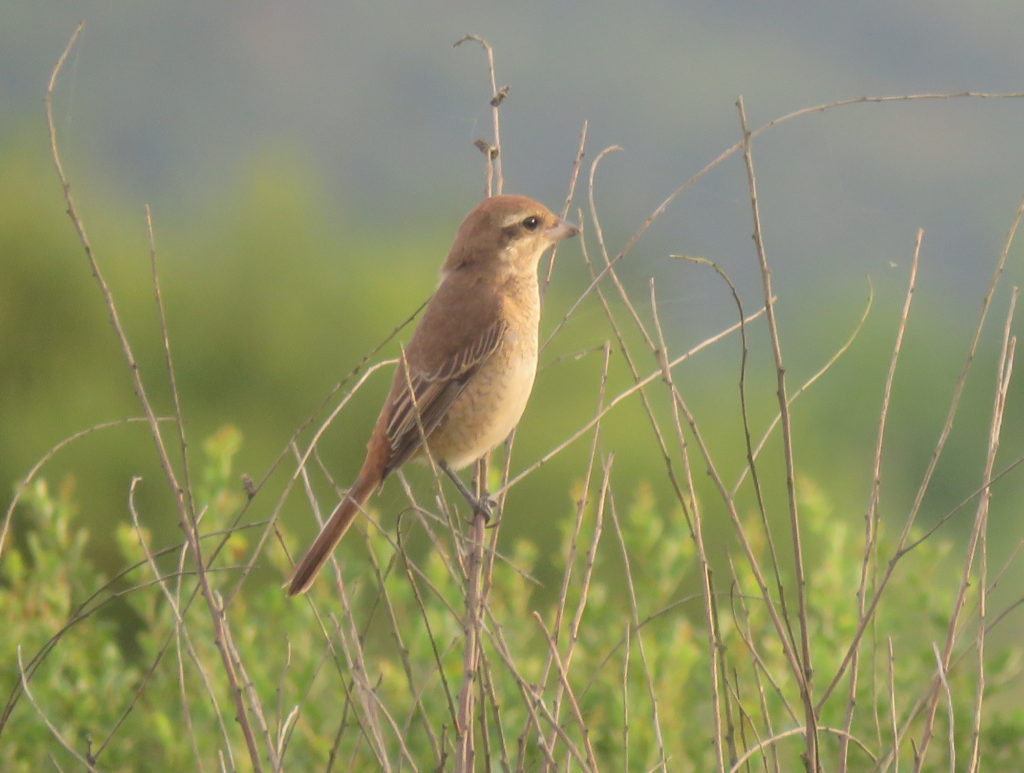 As in spring, the variation in these shrikes is fascinating if rather more subtle, deserving much more study! © Bernhard Seliger (top and bottom image) and Nial Moores
As in spring, the variation in these shrikes is fascinating if rather more subtle, deserving much more study! © Bernhard Seliger (top and bottom image) and Nial Moores
Eastern Great Tit Parus minor. Probably 50+ were logged in total, most of which were juveniles. Although difficult to confirm during such a rapid survey, it seemed that numbers were increasing from day to day…will this be an irruption year?
Chinese Penduline Tit Remiz consobrinus. Two parties, of four and of five, were seen in Jincheon on the 17th, including several juveniles – confirming successful breeding probably for the first time in Korea.
 Juvenile Chinese Penduline Tit © Nial Moores
Juvenile Chinese Penduline Tit © Nial Moores
Light-vented Bulbul Pycnonotus sinensis. The most numerous landbird we encountered after Tree Sparrow, with dozens of birds in multiple locations, including some advanced First Calendar-years and some very recently fledged birds. As young fledglings were noted on the island in late May, it appears that this species can be double-brooded here.
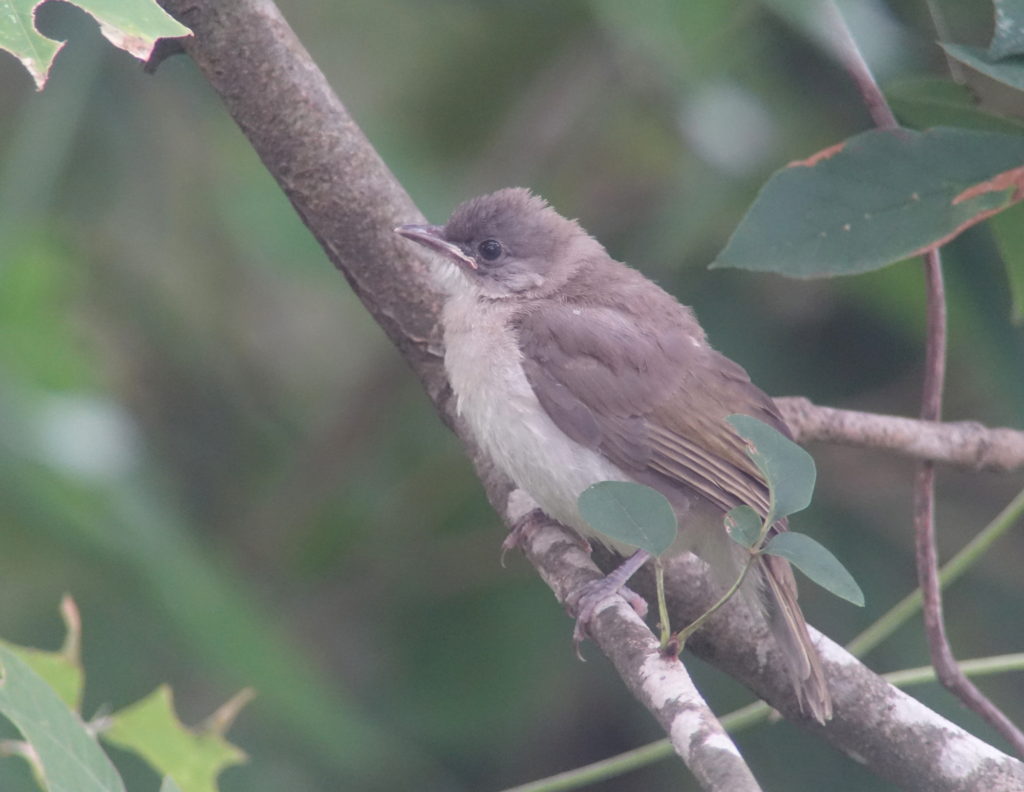 Young juvenile Light-vented Bulbul © Nial Moores
Young juvenile Light-vented Bulbul © Nial Moores
Thick-billed Warbler Iduna aedon. One was at Junghwadong on the 19th.
Daurian Starling Agropsar sturninus. From 3-5 were in Yeonhwa Ri on the 17th; with three there still on the 18th.
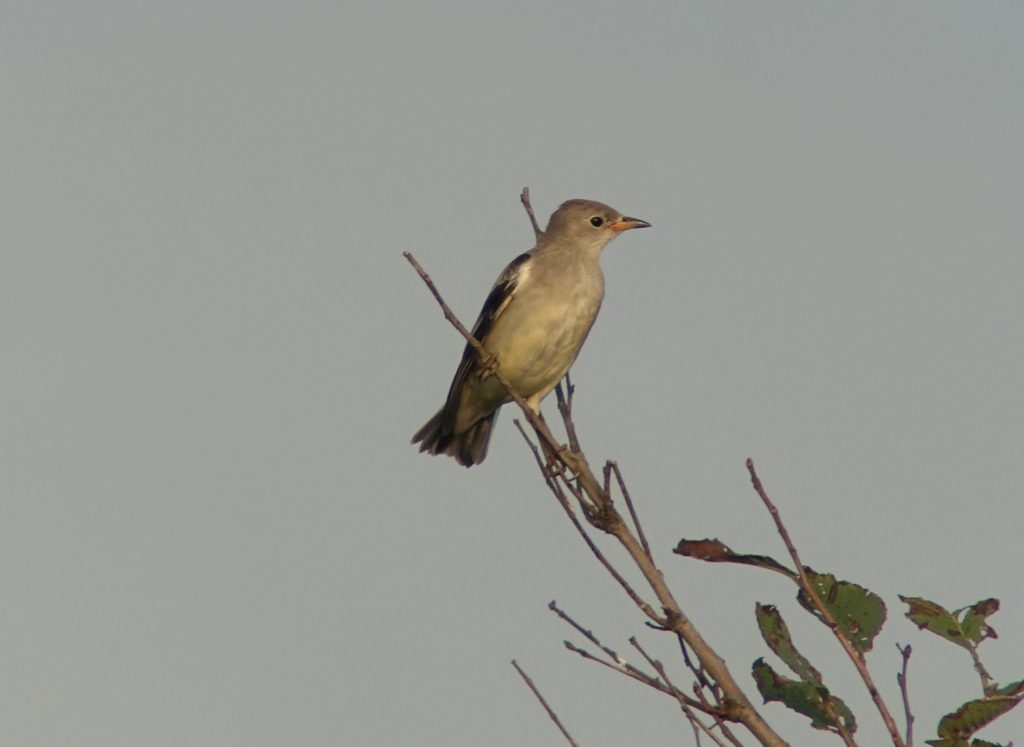 Juvenile Daurian Starling © Nial Moores
Juvenile Daurian Starling © Nial Moores
Stejneger’s Stonechat Saxicola stejnegeri. Noted daily, with a peak day count of 20+ and probably 30-50 birds recorded in total.
 Stejneger’s Stonechat © Nial Moores
Stejneger’s Stonechat © Nial Moores
Forest Wagtail Dendronanthus indicus. Probably 5-10 birds in total. Several times heard overhead in active migration, with the best views being of two together in Jincheon on the 17th.
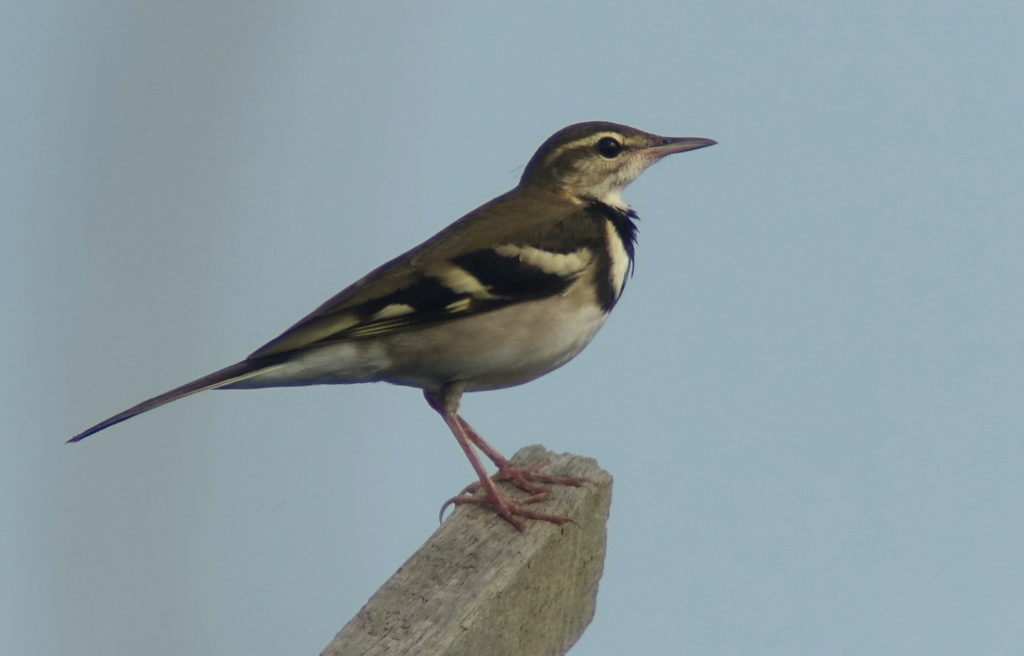 Forest Wagtail © Nial Moores
Forest Wagtail © Nial Moores
Eastern Yellow Wagtail Motacilla tschutschensis. The largest concentration was of c. 35 in Jincheon on the 18th, with 2-3 noted in several additional locations on the 18th and 19th.
Richard’s Pipit Anthus richardi. The largest concentration was of five in Jincheon on the 17th, with 1-2 heard in two additional locations.
Blyth’s Pipit Anthus godlewskii. One was heard (and glimpsed) in Jincheon on the 17th.
In addition, we also took some short recordings of tree frogs; counted 55+ Spotted Seal off Jincheon; and saw what appeared to be a Least Weasel.
 Baekryeong supports a substantial proportion of the Yellow Sea’s small and fast-declining population of Spotted Seal Phoca larga © Nial Moores
Baekryeong supports a substantial proportion of the Yellow Sea’s small and fast-declining population of Spotted Seal Phoca larga © Nial Moores
(All images by Nial Moores taken with a handheld camera through a truly superb Swarovski scope…)

